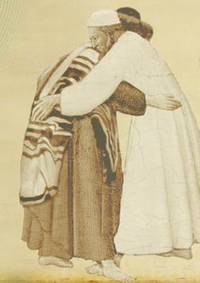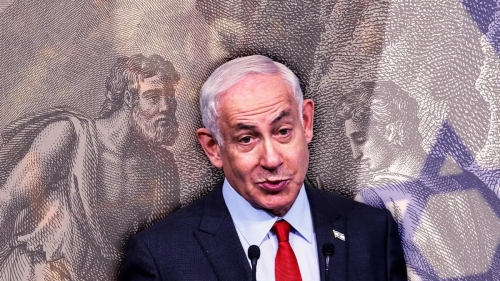More in common than we think
 A new Gallup poll shows that American Muslims and Jews - in addition to having a shared religious minority experience - share a great deal of political and social views, as well as a deeper than expected affinity. |
Contrary to common assumptions, many Jewish and Muslim Americans enjoy warm relations. Yet we are only beginning to understand how and why this is so. A Gallup report released last week goes a long way to explaining this unexpected trend, which shows that the two diverse communities have more in common than is often thought.
The report, "Muslim Americans: Faith, Freedom, and the Future", reveals that overwhelming numbers of Jewish Americans believe Muslim Americans are loyal to their country - 80 per cent to be exact. Aside from Muslims themselves, no other religious community demonstrates such confidence in the loyalty of America's Muslim citizens.
Further, it seems that Jewish and Muslim Americans share a number of common political views - even about issues as contentious as the Middle East conflict. The same study indicates that 81 per cent of Muslim Americans and 78 per cent of Jewish Americans support a two-state solution, which would enable Israel and a future independent Palestinian state to live side by side. While dialogue about the Middle East conflict remains contentious, the vision for a long-term solution appears surprisingly similar.
How could this be? Why would two communities, so often portrayed as being at each other's throats, not only have confidence in each other but have similar perspectives on even the most contentious issues?
One possibility is a shared immigrant experience. Jewish immigrants, who arrived in multiple waves of immigration but most visibly in large numbers at the end of the 19th century, often used education as a means of gaining a foothold in America and of finding a way to contribute to their new country. It now appears that Muslims are taking a similar approach. In fact, 40 per cent of Muslims surveyed in a 2009 Gallup report, "Muslim Americans: A National Portrait", note that they have attained a college degree or higher. This makes Muslim Americans the second most likely of any religious group, behind Jewish Americans, to attain at least a college education. It seems that Muslim Americans may be carving out a niche and contributing to American society today much as their Jewish counterparts did a century ago.
While Jews and Muslims in America may have highly educated communities, both groups also exhibit fear about perceptions that others hold of their traditions. According to last week's report, Jewish and Muslim Americans are more likely than adherents of any other tradition to conceal their religious identity.
It may be an understanding of what this means that has caused what may best be described as significant empathy on the part of many Jewish and Muslim Americans. While 60 per cent of Muslim Americans polled by Gallup say that they experience prejudice from most Americans, a remarkable 66 per cent of Jewish Americans say that most Americans exhibit prejudice against Muslims. This means that Jewish Americans are aware of anti-Muslim prejudice more than any other religious community.
Fear and other negative responses to prejudice may compound the overall drive for Jews and Muslims to obtain a higher education and find a niche in the United States. This process may also create stress for members of both communities. According to the 2009 Gallup report, 39 per cent of Muslim Americans and 36 per cent of Jewish Americans report experiencing a lot of "worry". This worry may correspond to fear of prejudicial treatment and a desire to conceal one's religious identity. Overt displays of religious identity and the push to succeed in a new society may come into tension for both communities, though this is a hypothesis that warrants further research.
In short, Jews and Muslims share profoundly in their experience in the United States. As small religious minorities, each under two per cent of the American population - with Muslim Americans perhaps a fraction of that figure - they maintain a sense of marginalization. Yet their response to this adversity is one of contribution to society through significant investment in personal education, which in turn creates new opportunities.
Jewish immigration to America may have peaked over a century ago, while Muslim immigration is still relatively new. But both communities share in their drive not only to make America their home but to attain a prominent role in that newfound homeland. Both communities would do well to recognize the remarkable parallels in their experiences as immigrants to America - as would Americans in other religious communities. The potential for collaboration is clear, while the narrative of conflict has been significantly debunked.
Source: Common Ground News Service: Joshua M. Z. Stanton is co-founder of the Journal of Inter-Religious Dialogue and Religious Freedom USA, as well as a Schusterman Rabbinical Fellow at Hebrew Union College.

















